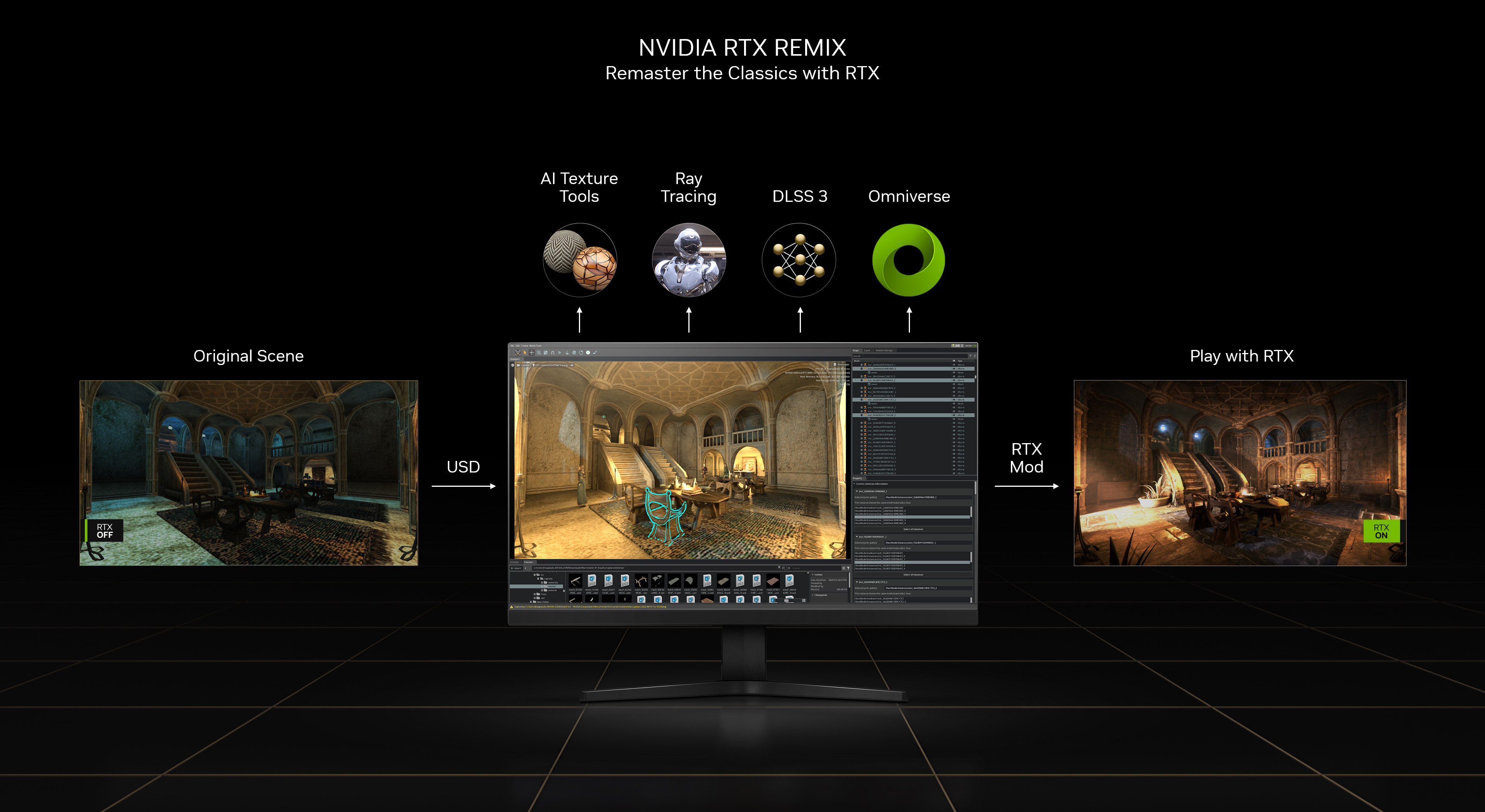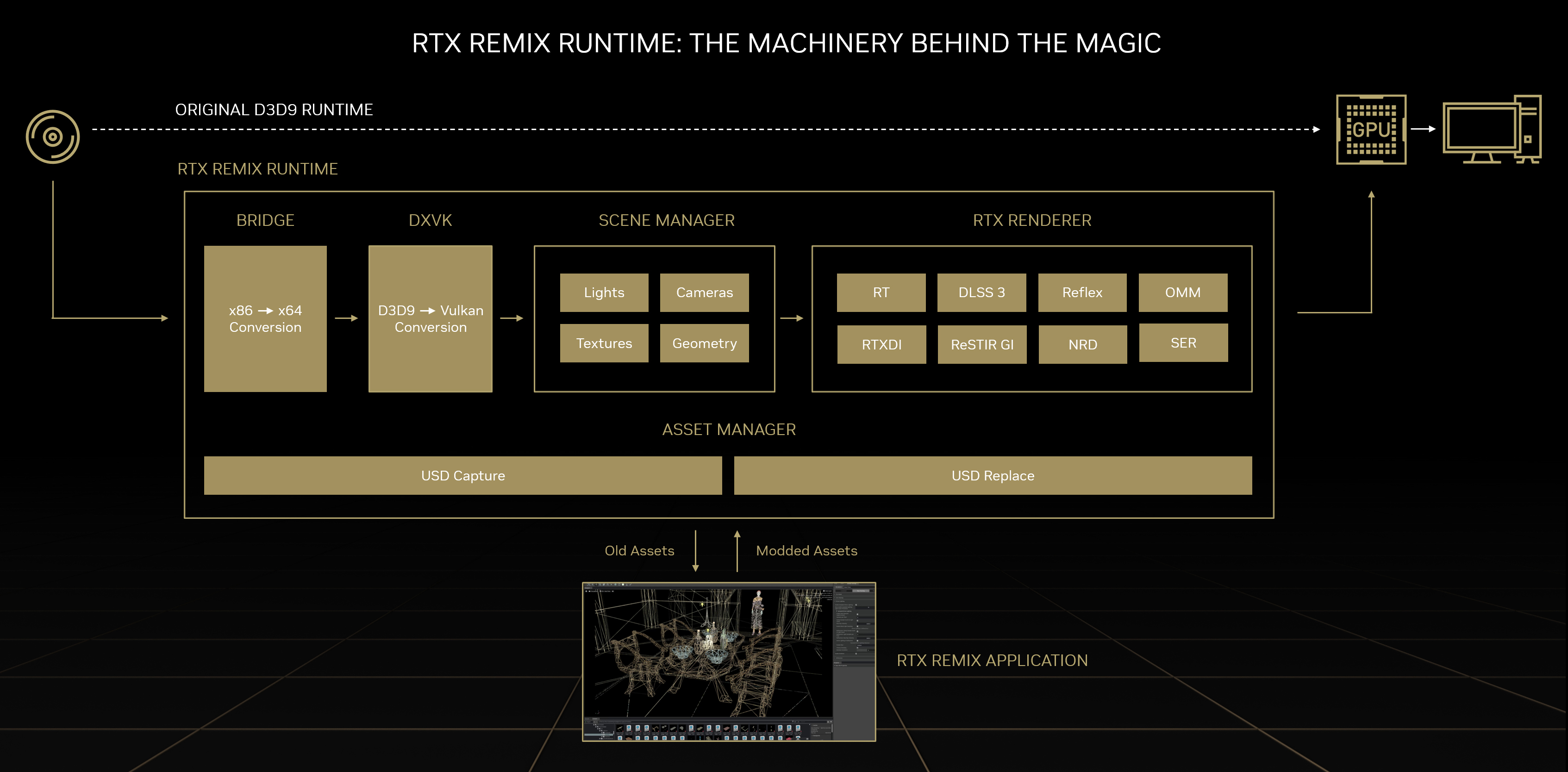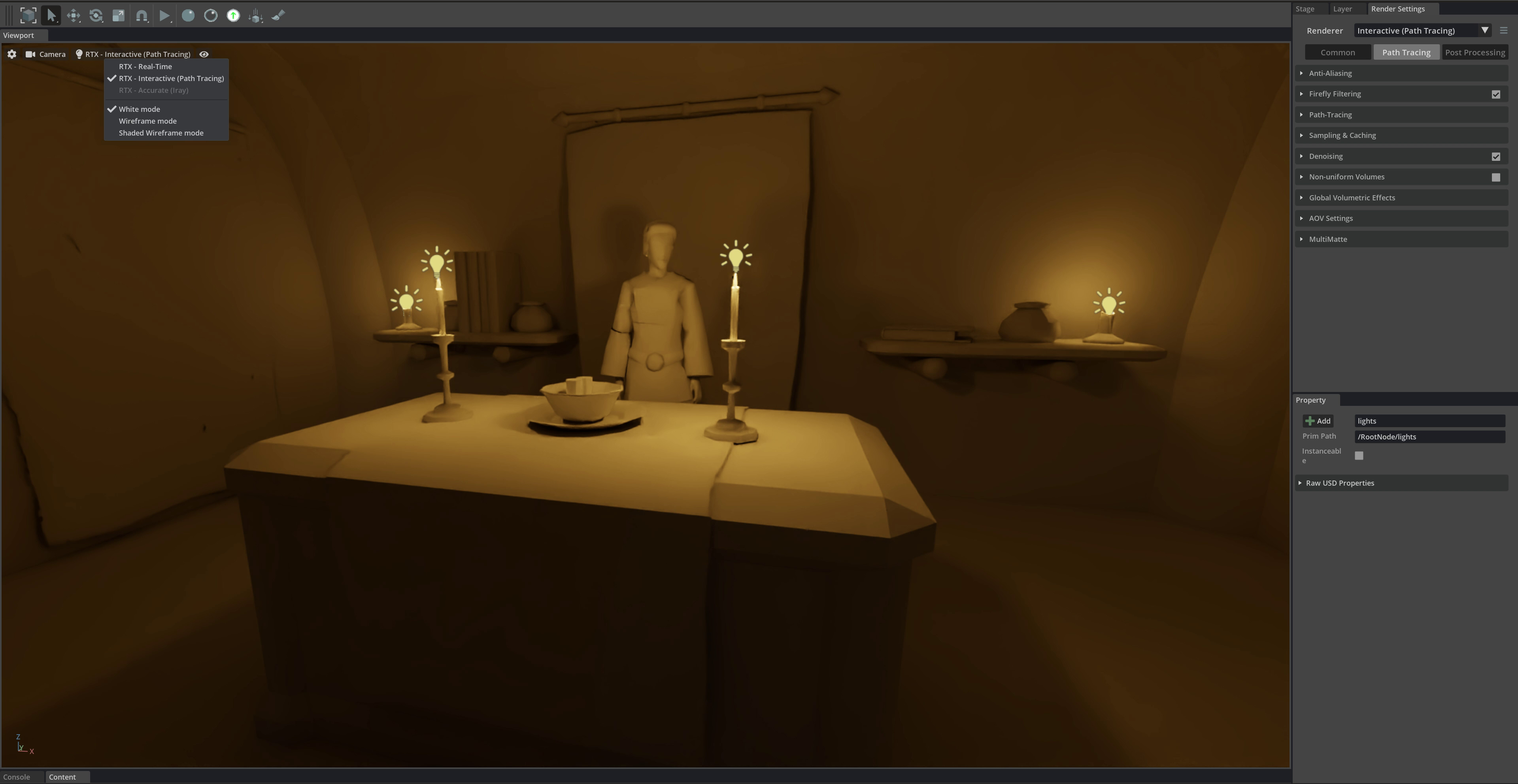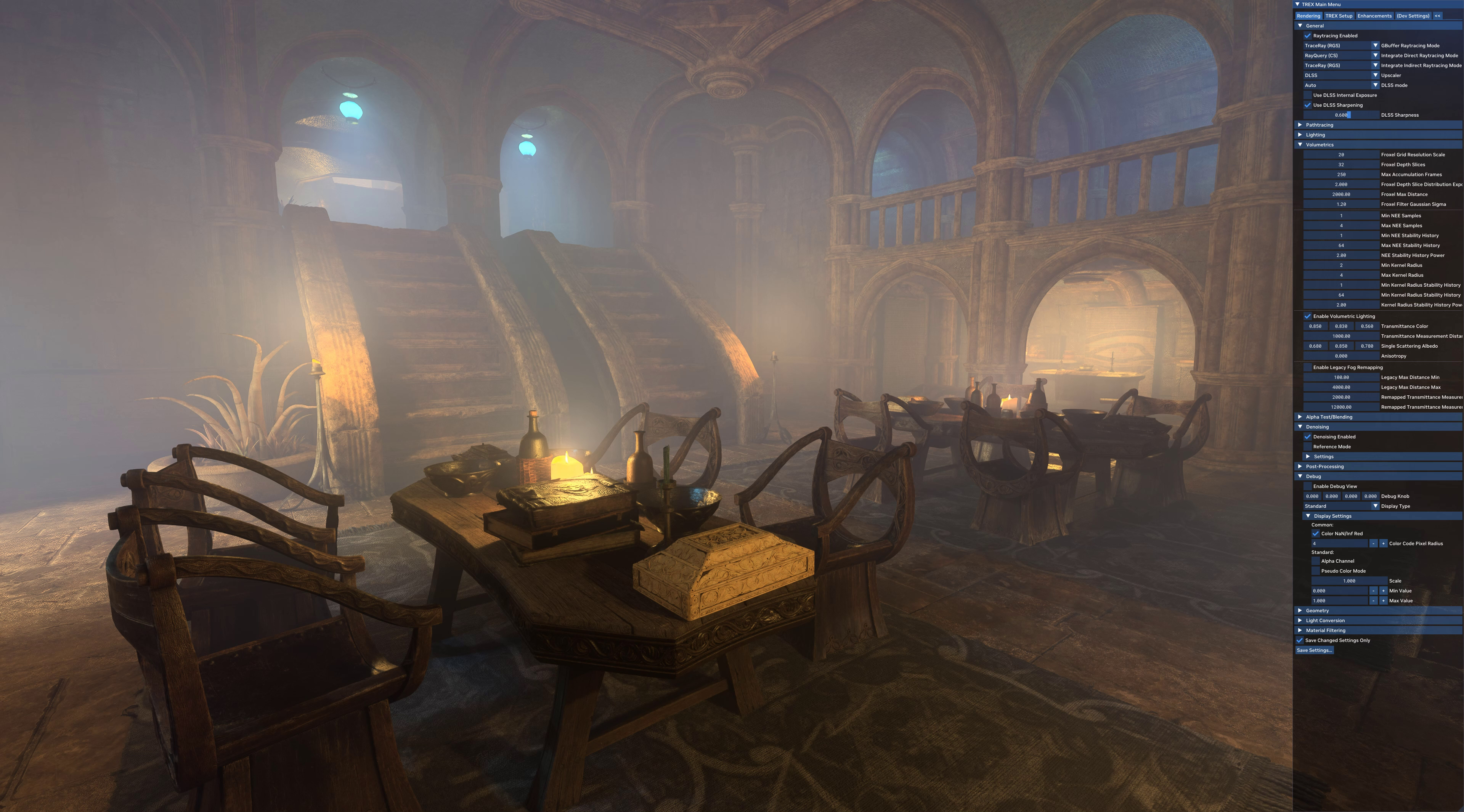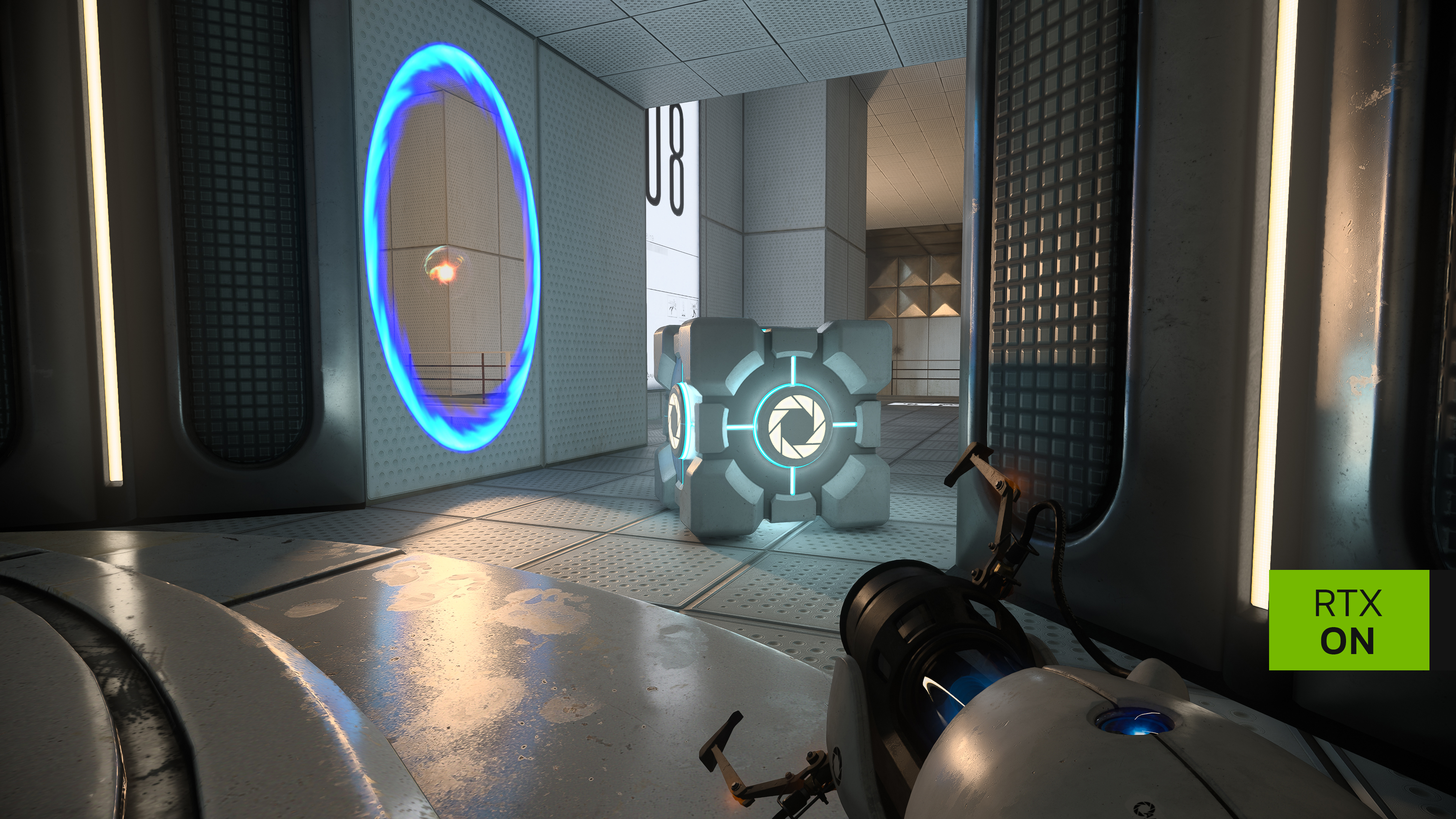NVIDIA RTX Remix: Create & Share #RTXON Mods For Classic Games
Modding is a massive culture. There are millions of modders, and billions of mods are downloaded each year. Mod DB and Nexus Mods are the Internet’s premier mod repositories, hosting over 400,000 mods for 1,800 games. Mods enhance graphics as faster GPUs are released, extend a game’s lifespan with new content, expand their audience with total gameplay conversions, and keep games fresh for years after official DLC and update support has concluded. They’re an important aspect of PC games, and have a noticeable impact on the long-term sales and popularity of a title. In fact, the tactical shooter, MOBA, and battle royale genres all started as mods. Today, 9 of the 10 most popular competitive games owe their existence to mods.
Bethesda Softworks’ The Elder Scrolls V: Skyrim and The Elder Scrolls V: Skyrim Special Edition are the most modded games, and for each title the most downloaded mods are graphical, leveraging the power of modern GPUs to enhance games in ways developers couldn’t at the time.
Crafting graphics mods isn’t easy, however. Game-specific tools must be invented to actually mod a game, new art must be created for every asset, programming knowledge is often required to add modern effects like displacement mapping, and the final mod must be packaged correctly for others to install.
Furthermore, many classic games are challenging or impossible to mod because of hard to access files, and a lack of official mod tools. Enthusiast programmers can often pool their talents to overcome these arduous challenges for the most popular games, but for every game that gets this treatment there are hundreds that don’t. Without tools, one simply can’t load updated textures and models into the game.
And if you wish to add true ray tracing (instead of screen space mods), there are several insurmountable barriers: classic games are 32-bit and don’t support ray tracing; 32-bit programs can only use a max of 3GB of RAM, which isn’t enough for the high-res, enhanced assets needed to take full advantage of ray tracing; ray tracing APIs don’t exist for older iterations of DirectX; converting 32-bit/x86 code to modern x64 code, to insert ray tracing support, requires incalculable amounts of time without source code. PCGamingWiki, an invaluable resource, tracks 32-bit games and those that have been ported or patched - of 7,500 known titles, only 28 have been converted to a moddable format, to any degree.
For an example of the effort required to get a classic game upgraded with ray tracing, our Quake II RTX mod took a team of NVIDIA engineers, artists and QA experts months to develop, with the benefit of source code and others’ mods and tools. Repeating this process time and again for the many classic games that people love simply isn’t possible, so we’ve taken a different approach.
Enter NVIDIA RTX Remix, a free modding platform built on NVIDIA Omniverse that enables modders to quickly create and share #RTXON mods for classic games, each with enhanced materials, full ray tracing, NVIDIA DLSS 3, and NVIDIA Reflex.
Introducing NVIDIA RTX Remix
NVIDIA RTX Remix will launch soon, making it easy to remaster supported DirectX 8 and DirectX 9 games with fixed function graphics pipelines.
In a compatible game, press the hotkey and the surrounding scene is captured, as you can see here in a test scene from Bethesda Softworks’ The Elder Scrolls III: Morrowind, one of Mod DB and Nexus Mods’ most-modded games. Suddenly, one of the hardest challenges in modding is easily solved.
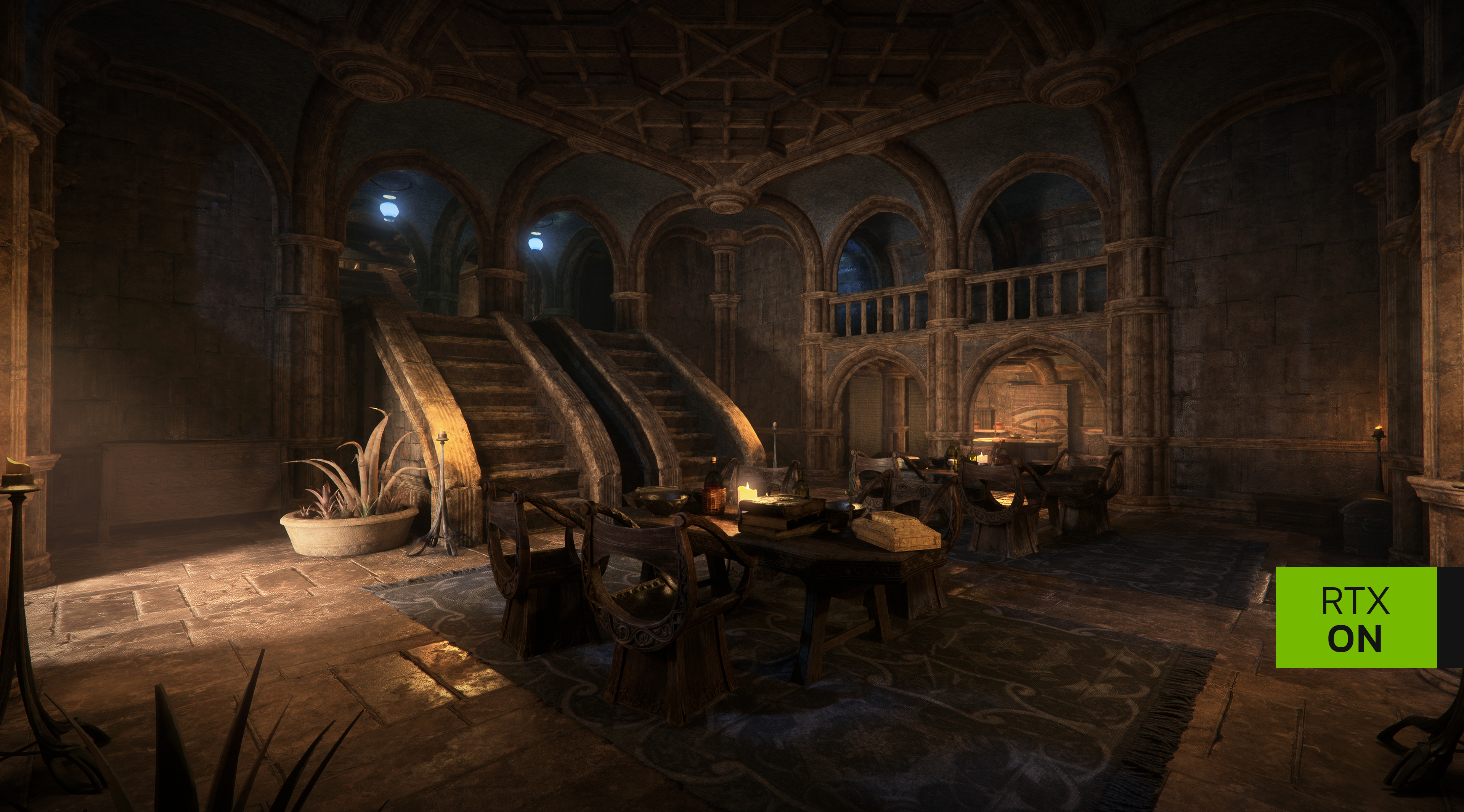
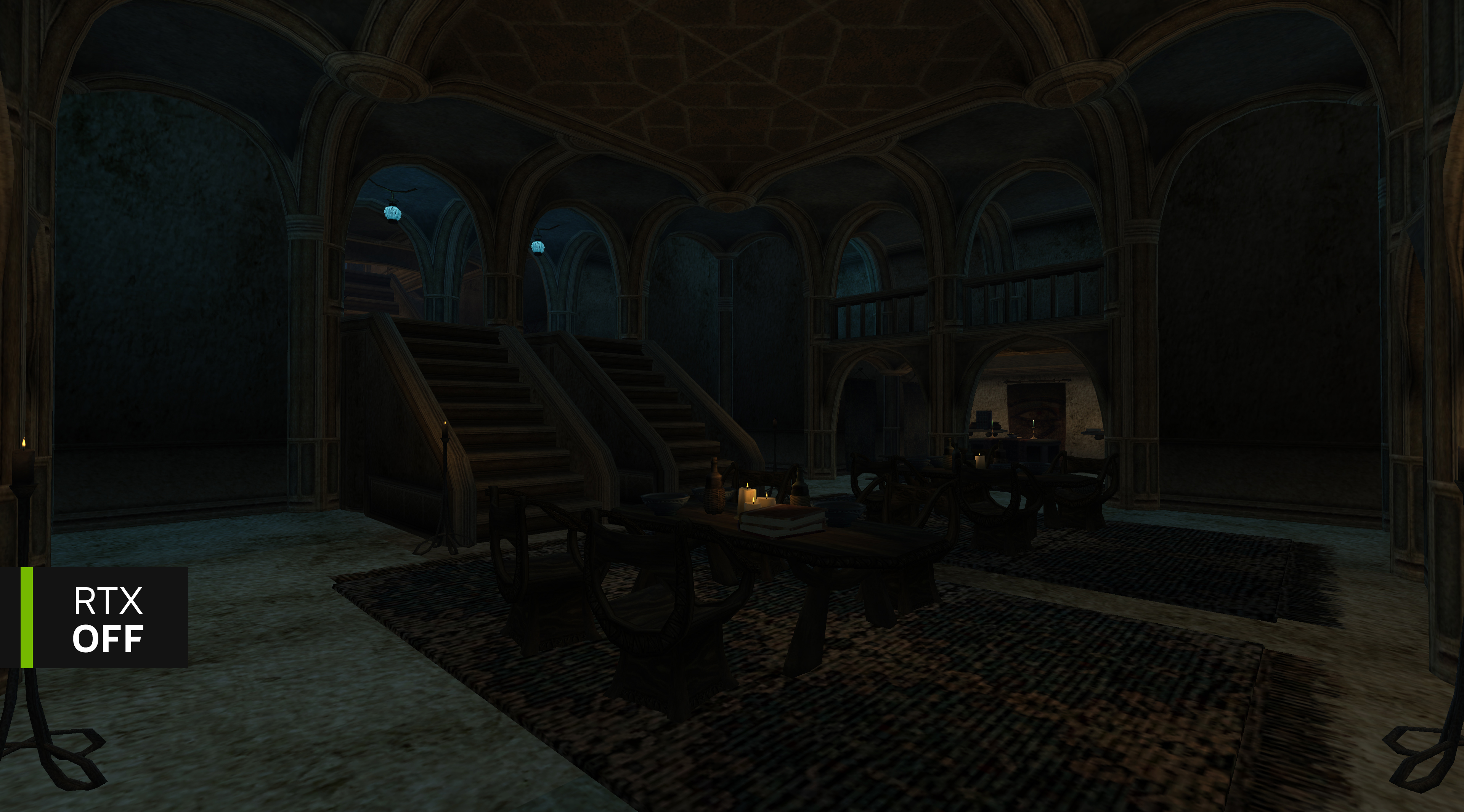
RTX Remix is able to capture the textures, geometry, lighting, and cameras thanks to an innovative, custom D3D9 Runtime called the RTX Remix Runtime. Classic games like Morrowind use the D3D9 runtime to send draw calls (rendering instructions) to the GPU. RTX Remix Runtime intercepts those draw calls, interprets them into distinct assets, and reassembles those assets into an identical scene. From there, RTX Remix converts the assets and scene into the widely adopted Universal Scene Description (USD) open 3D framework, which is the foundation of the NVIDIA Omniverse platform for building and operating custom 3D pipelines.
Modify classic games, including Bethesda Softworks’ The Elder Scrolls III: Morrowind, to add ray tracing, DLSS 3, enhanced textures, and more
Since RTX Remix is built on NVIDIA Omniverse, these USD game assets can easily be imported into the RTX Remix application, or any other Omniverse app or connector, including game industry-standard apps such as Adobe Substance 3D Painter, Autodesk Maya, 3ds Max, Blender, SideFX Houdini, and Epic Games’ Unreal Engine. Mod teams can collaboratively improve and replace assets, and visualize each change, as the asset syncs from the Omniverse connector to Remix’s viewport. This powerful workflow is going to change how modding communities approach the games they mod, giving modders a single unified workflow that allows them to carry their knowledge forward to a variety of titles, enabling the remastering of a diverse set of games without having to learn a multitude of proprietary tools.
When remastering assets for use with ray tracing, each texture and surface needs physically-based rendering (PBR) materials, to allow them to interact naturally with ray-traced light. For instance, glass reflects the world with clear detail, while laminate wood flooring has rough, coarse reflections. And stone, though without visible reflections, is still capable of bouncing light and having an effect on the scene. Classic games are generally built with simple color textures that lack any of these properties.
Beyond textures, your surfaces need new details, too. To enhance a classic game, a normal map is required, or an entirely new surface with genuine geometric detail that’s been hand-crafted by the modder, both of which take a fair bit of time to make.


Ray Tracing & Original Textures on left, Ray Tracing & AI Enhanced Textures on right. Click here to view the comparison in 4K
RTX Remix simplifies and accelerates the art remastering process using AI. AI Super Resolution increases the resolution of the extracted textures by up to 4X, turning 1080p-class textures into higher-quality 4K assets. And AI Physically Based Materials scans the game’s environment to add PBR properties to all extracted assets. As demonstrated by these screenshots from TaleWorlds Entertainment's Mount & Blade, a cobblestone floor immediately goes from a flat surface with a basic texture, to a detailed stone surface with a roughness map that interacts with light realistically.
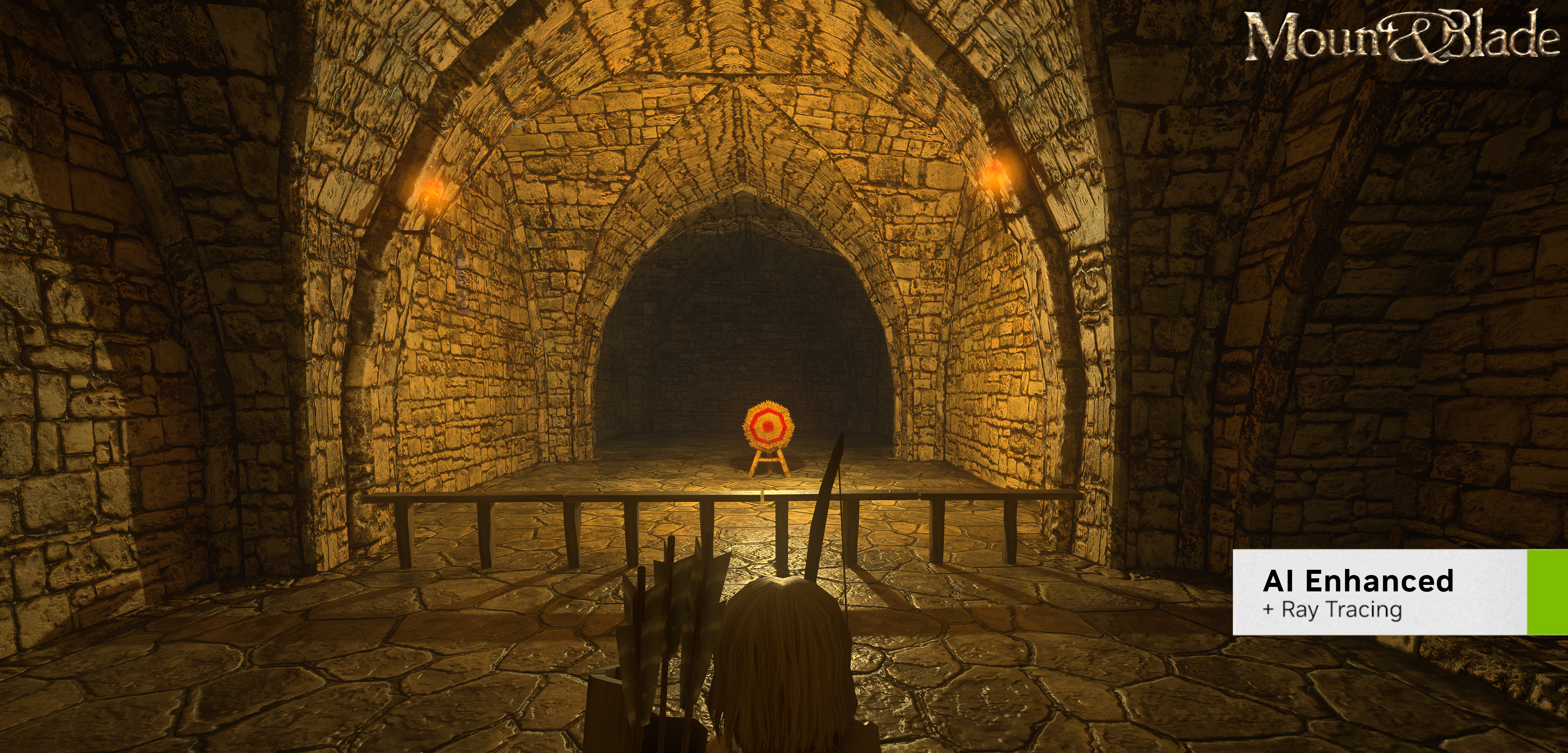
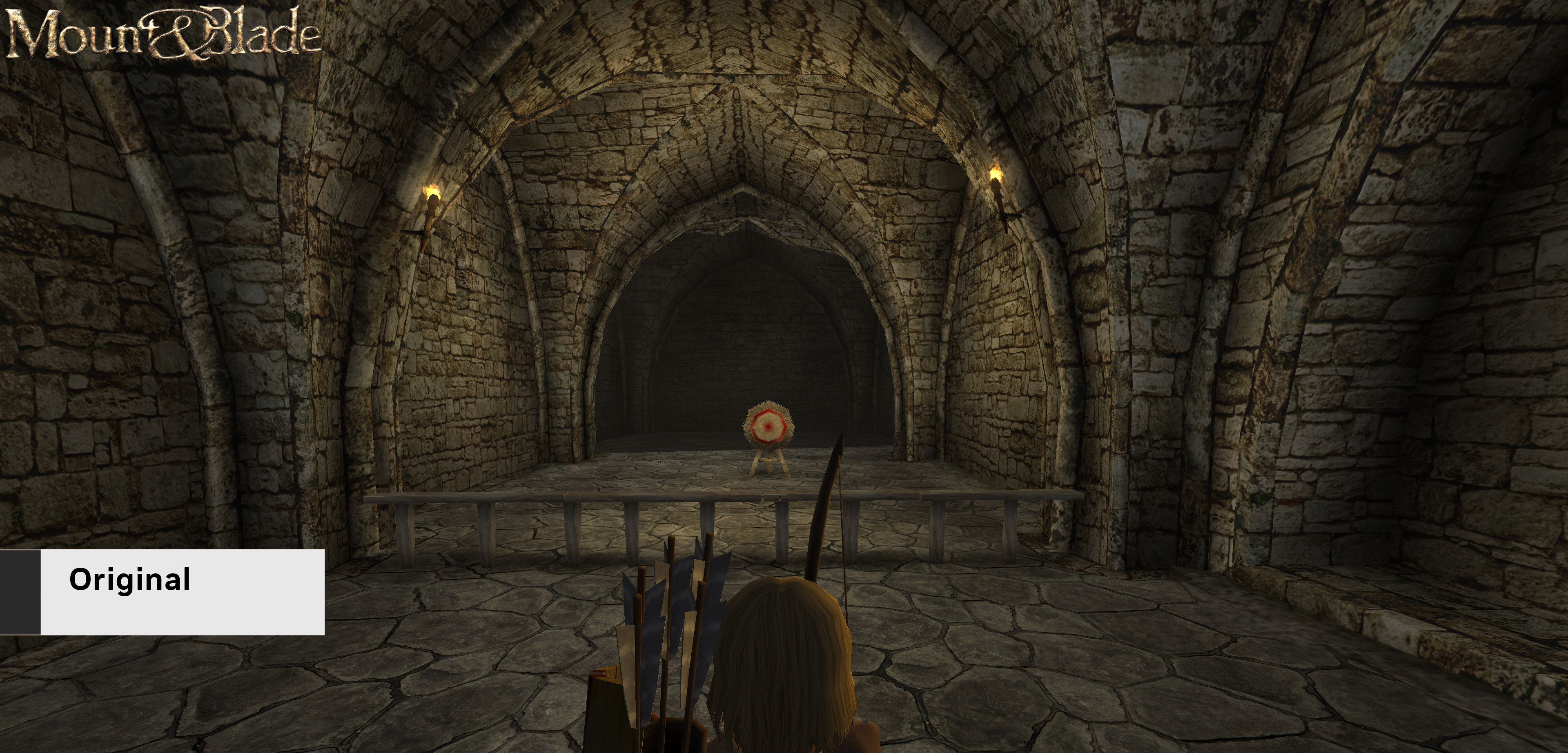
TaleWorlds Entertainment's Mount & Blade. The original game is seen on the left, and on the right the game running in RTX Remix with Ray Tracing & AI Enhanced Textures. Click here to view the comparison in 4K
In the image below from Bethesda Softworks’ The Elder Scrolls III: Morrowind, NVIDIA artists used RTX Remix to remaster a scene. Our team loaded into a shared RTX Remix project via Omniverse, and as one member updated an object’s material properties, or an asset’s mesh in Omniverse-connected applications like Substance or Maya, the game scene would sync in the Remix viewport, making collaboration a breeze. A second artist could then spend their time in the Remix application, meticulously moving each completed asset to its perfect position, and relighting the scene with the rebuilt objects in mind. It’s that simple, enabling round-the-clock collaboration and development with a mod team spread across the planet. Previously, you’d need to wait for one person’s work to be finished and sent. Now, there are no delays, and another can pick up where you left off.

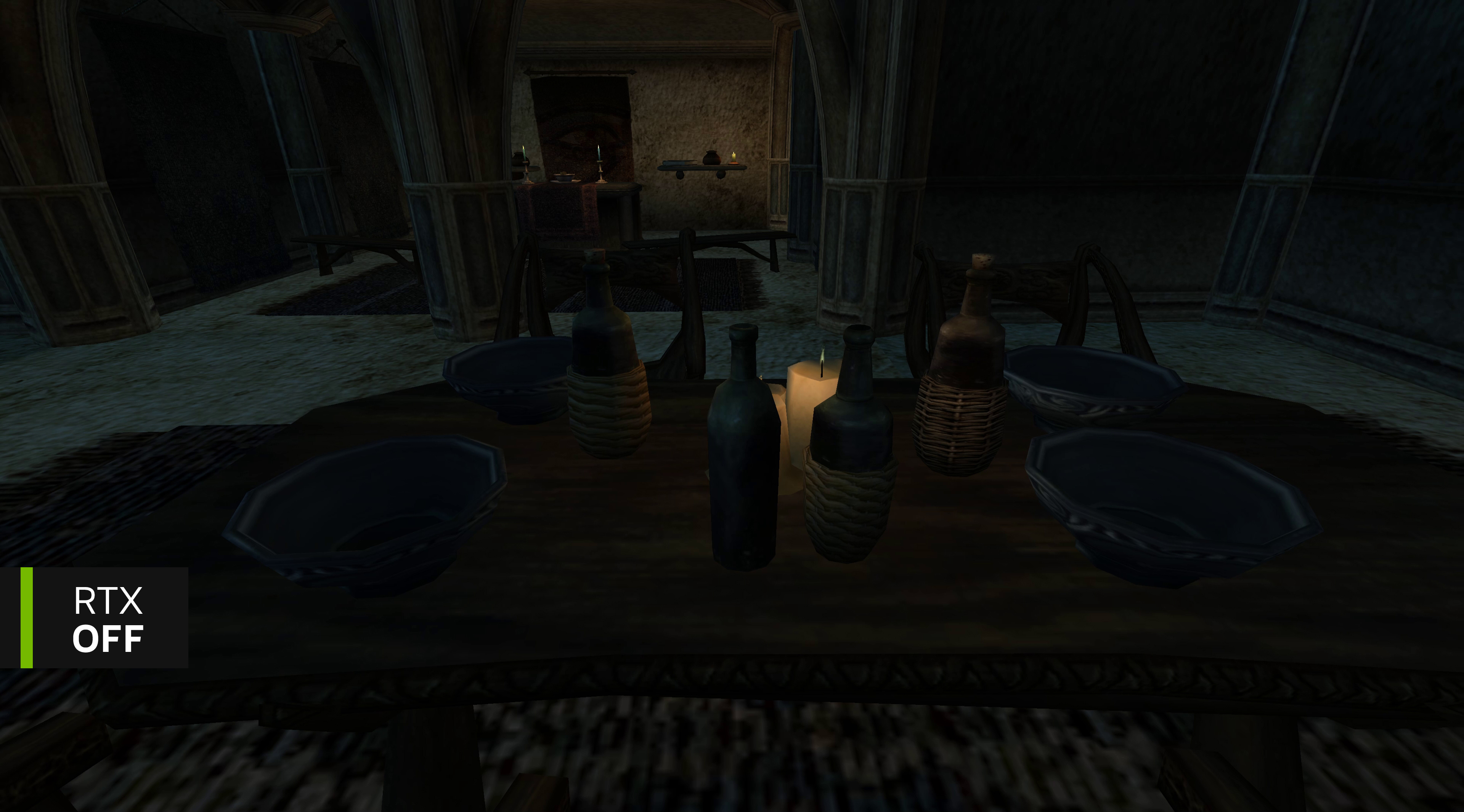
Textures and models are just one part of the remastering process, however, as classic games were made in a time before advanced lighting techniques, often relying on invisible lighting sources to illuminate scenes. RTX Remix can convert legacy lights into realistic ones, allowing ray tracing to relight a scene with soft and realistic shadows.
Furthermore, RTX Remix provides immense flexibility to view lighting and shadows in isolation through a white mode, and with little effort, create new lights that help bring realistic global illumination, shadows, ambient occlusion, and reflections to a game. A modder can even create dynamic lights, and introduce volumetrics to make for a more immersive scene.
With RTX Remix, we took our Elder Scrolls III: Morrowind scene from the year 2002 and quickly gave it state of the art ray-traced and physically-based features. That’s the power of RTX Remix.
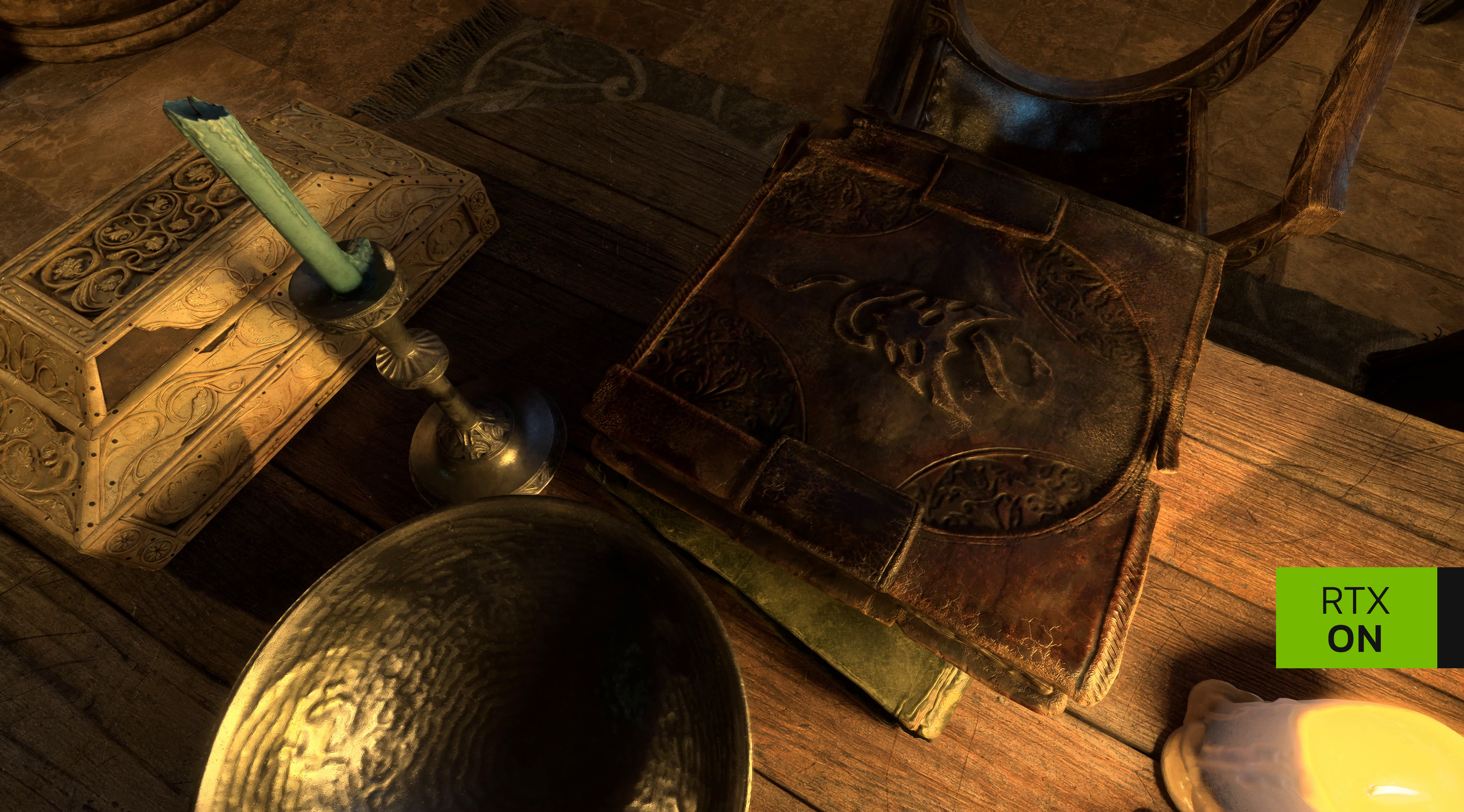
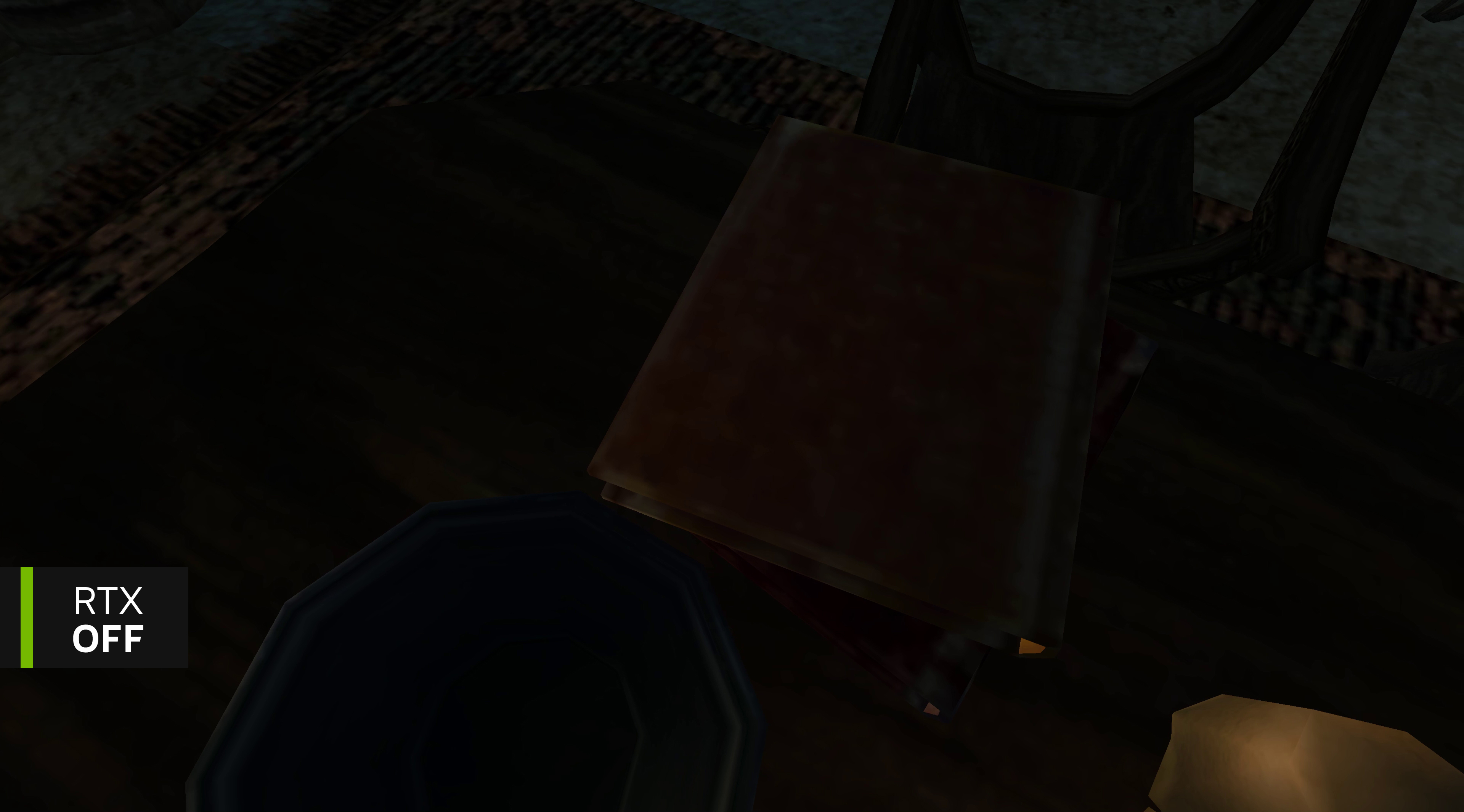
RTX Remix goes beyond our work for prior remasters like Quake II RTX, introducing new technologies that further enhance ray tracing. One of the most impactful new features, NVIDIA RTX Direct Illumination (RTXDI), enables you to add millions of dynamic lights to your game environments without worrying about performance or resource constraints. Imagine thousands of tiny LEDs, sci-fi control panels, Times Square billboards, or even exploding fireballs. RTXDI makes this possible while rendering in real time, enabling geometry of any shape to emit light, cast appropriate shadows, and move freely and dynamically.
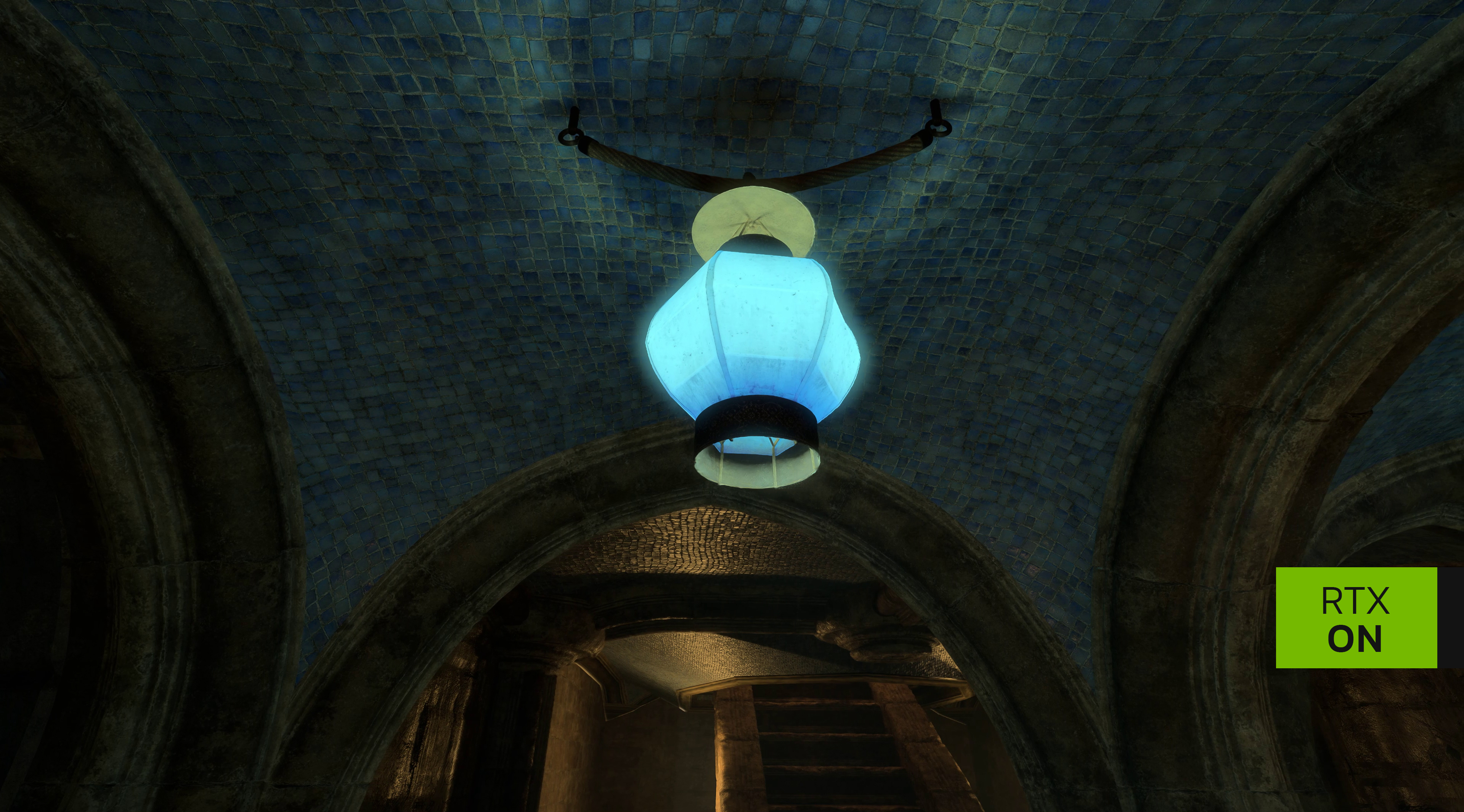
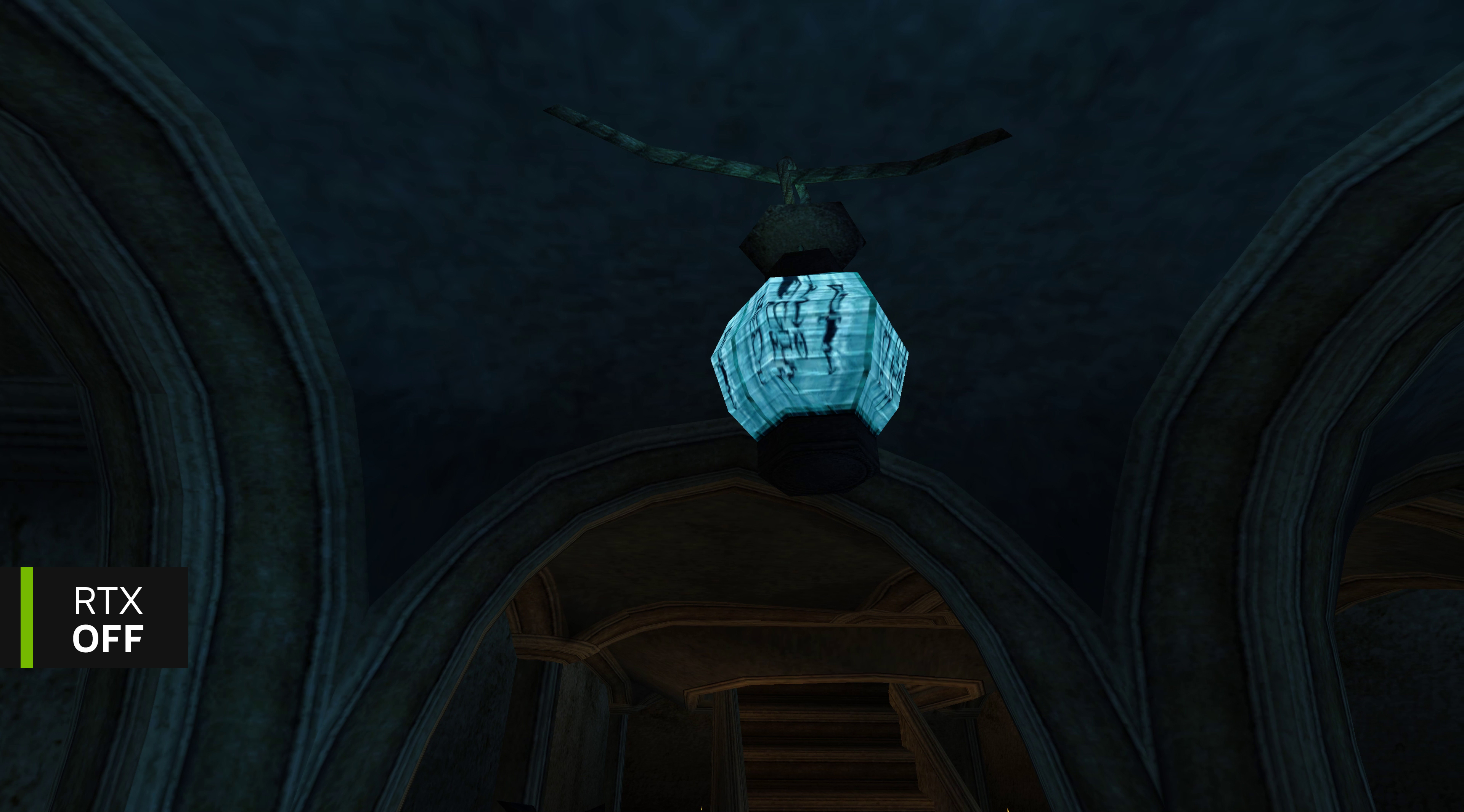
NVIDIA Reservoir Spatio Temporal Importance Resampling Global Illumination (ReSTIR GI) is a new global illumination technique that calculates per-pixel correct indirect lighting for multiple bounces. It allows indirect light to bathe a scene, and illuminate dark corners that are not even lit directly, in a highly performant manner.

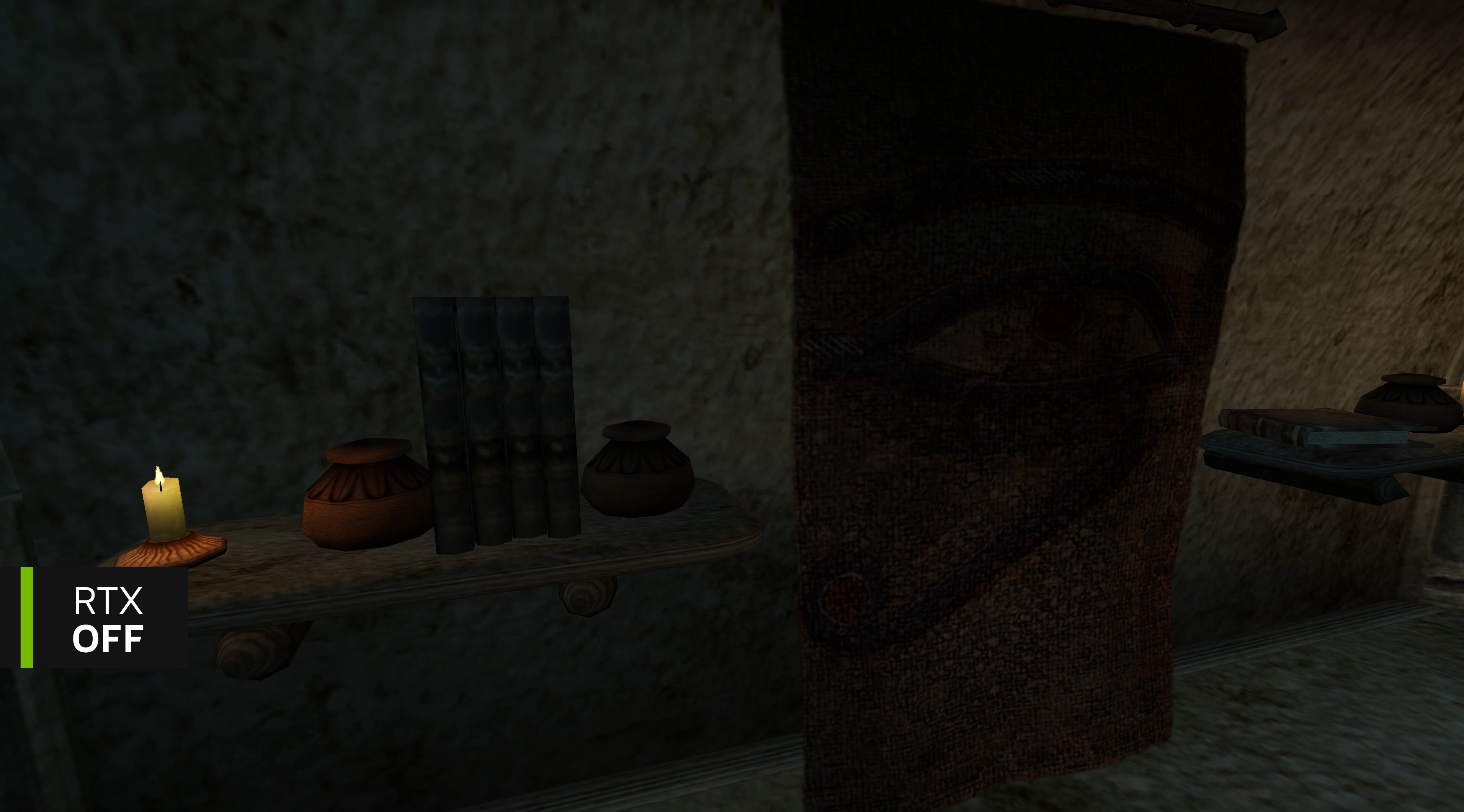
NVIDIA Real Time Denoisers (NRD) is a spatio-temporal ray tracing denoising library that assists in denoising low ray-per-pixel signals with real-time performance. Compared to previous-gen denoisers, NRD improves quality and ensures the computationally intensive ray-traced output is noise-free, without performance tradeoffs.
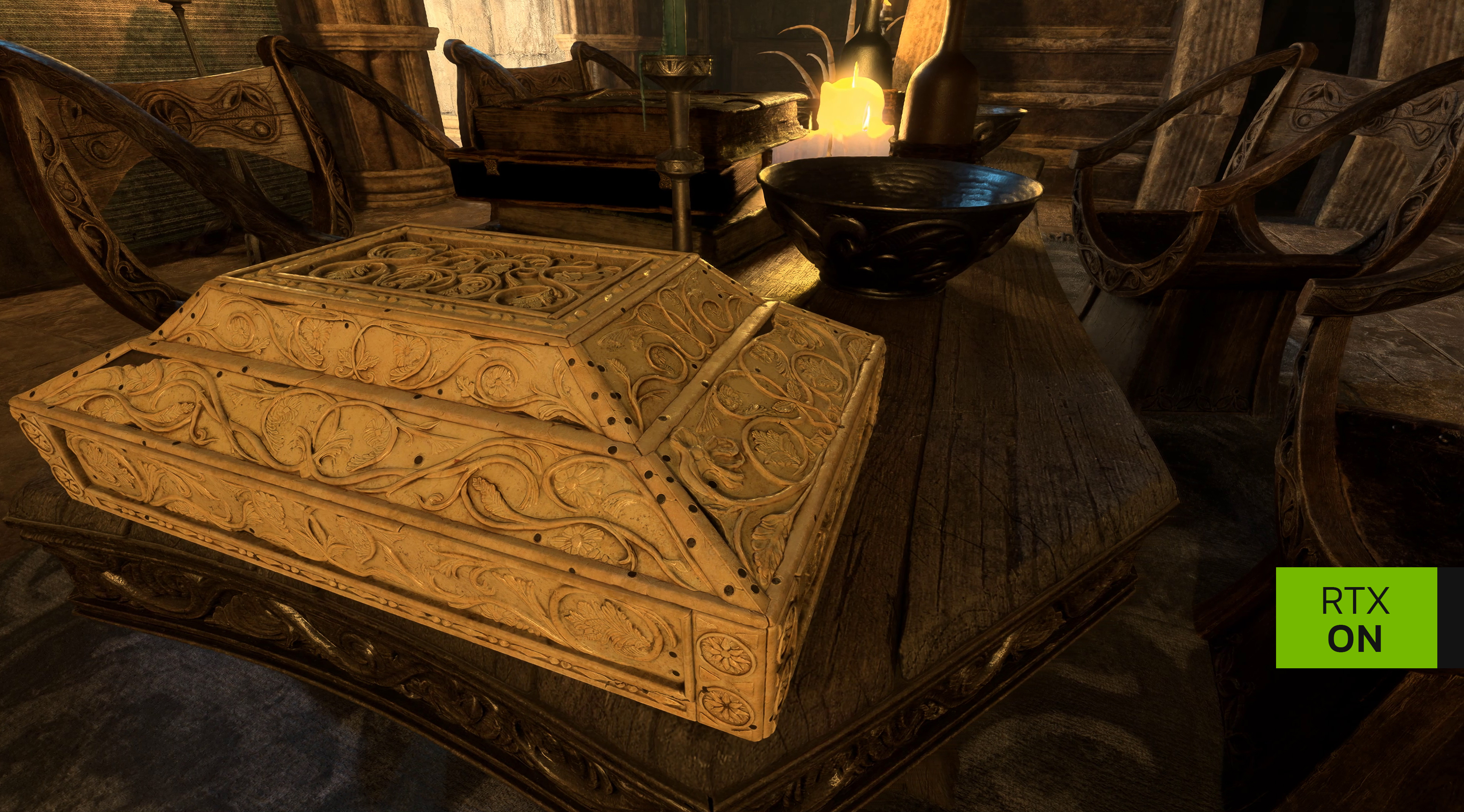
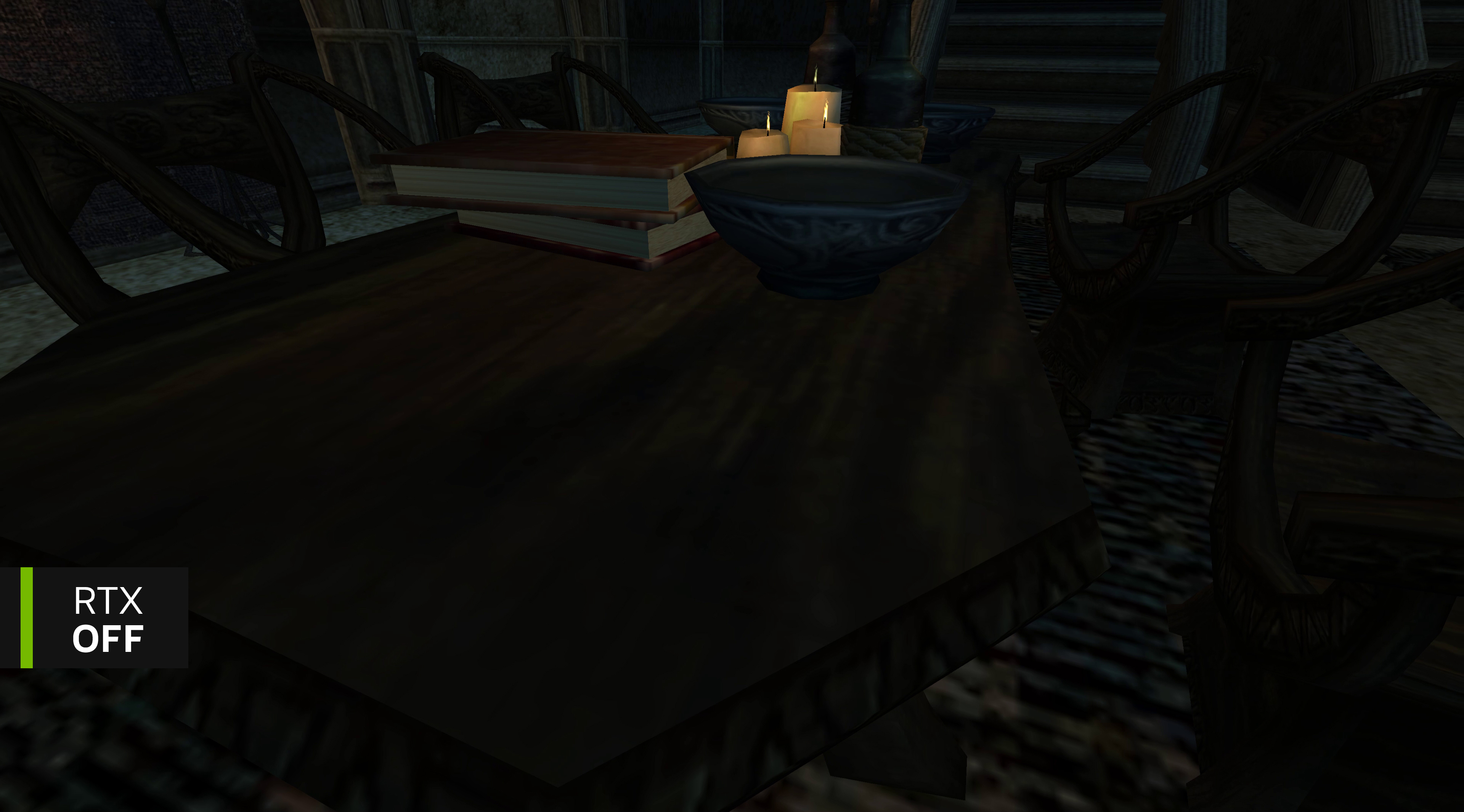
This combination of ray tracing technologies comes together to create an incredibly accurate ray tracer by modern game standards, far beyond our prior titles, as well as what is possible with screen space technologies.
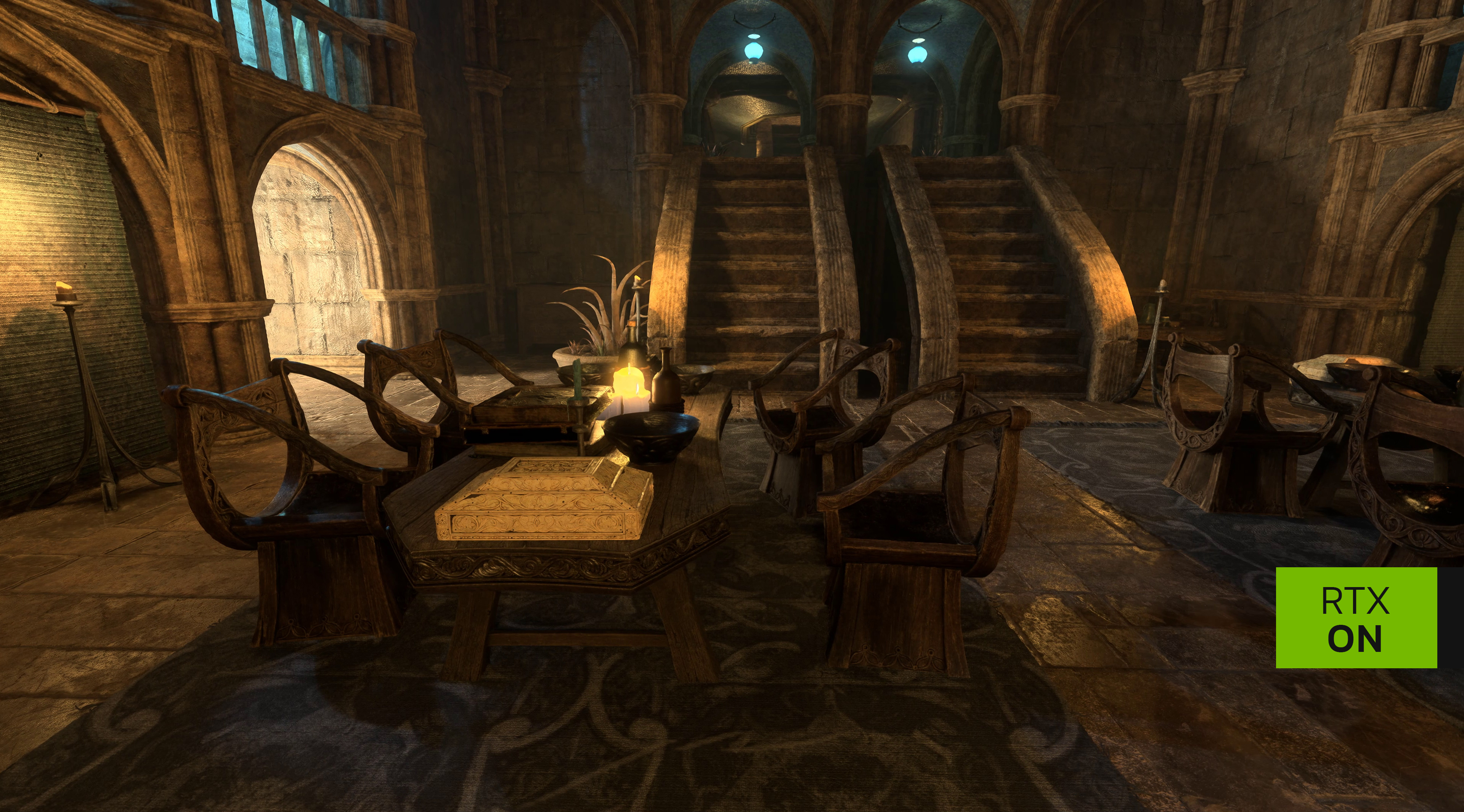

When the RTX Remix Mod is ready, it’s easy to export and share with fellow gamers online - they simply download the mod and drop it into the game’s directory alongside the .exe and launch the game. The NVIDIA RTX Remix Runtime does the rest, replacing the old rendering APIs and systems with RTX Remix Runtime’s 64-bit Vulkan renderer, and upgrading the visuals on the fly. The player also benefits from the instant addition of NVIDIA DLSS 3, for incredibly smooth frame rates, and NVIDIA Reflex, which improves responsiveness by reducing end-to-end system latency. And best of all, NVIDIA RTX Remix Mods work alongside existing gameplay mods downloaded from Nexus Mods, Mod DB and other sites, giving games with rich modded content an instant ray-traced upgrade.
Every RTX Mod also comes packaged with the RTX Remix Runtime editor, giving players a multitude of options to customize their experience in real-time. Whether you want to tweak material properties to make the world shiny, customize lighting intensity, add fog and volumetrics, or incorporate post-processing effects like bloom and motion blur, the RTX Remix Runtime has you covered. Advanced users can even activate diagnostic and heuristic tools to highlight every changed asset in a RTX Mod, enabling a collaborative mod team to easily review an in-progress mod as they play, leading to a better public release.
The Elder Scrolls III: Morrowind modified in real-time to add fog and volumetrics, using the NVIDIA RTX Remix Runtime
Portal with RTX, Made Using NVIDIA RTX Remix
To demonstrate the power of RTX Remix, we’ve created a Portal with RTX DLC that reimagines Valve’s classic game. It’ll be available for free for Portal owners in November; wishlist now and learn more in our Portal with RTX article.
Just like a real mod team, our NVIDIA developers collaboratively created this incredible mod using RTX Remix. Every tool and process documented above was applied to making this cutting edge DLC.
Soon, players will be able to get their hands on Portal with RTX, enhancing one of the top-rated games of all time, and they can customize their experience with the RTX Remix Runtime as they play.
NVIDIA RTX Remix - Sign Up Now
To make your own RTX Mods, sign up now to be notified of the NVIDIA RTX Remix’s availability. And while you wait for its release, stay tuned to GeForce.com for more info, and for the release of RTX Mods from NVIDIA-partnered modders.
NVIDIA RTX Remix requires a GeForce RTX GPU to create RTX Mods, while mods built using Remix should be compatible with any hardware that can run Vulkan ray-traced games. GeForce RTX 40 Series GPUs, with up to 2X ray tracing performance and DLSS 3 are sure to provide the ultimate experience for RTX Mods.
Also, be sure to head over to GeForce.com to learn about all our new GeForce RTX 40 Series announcements, and the new technologies that’ll make your games even better and more immersive.
